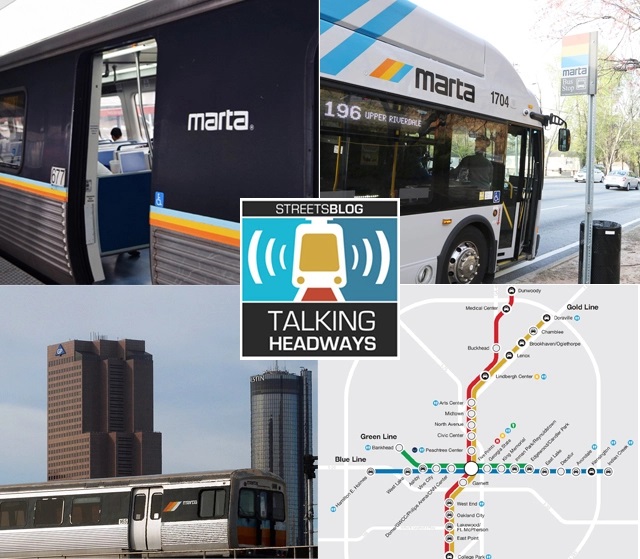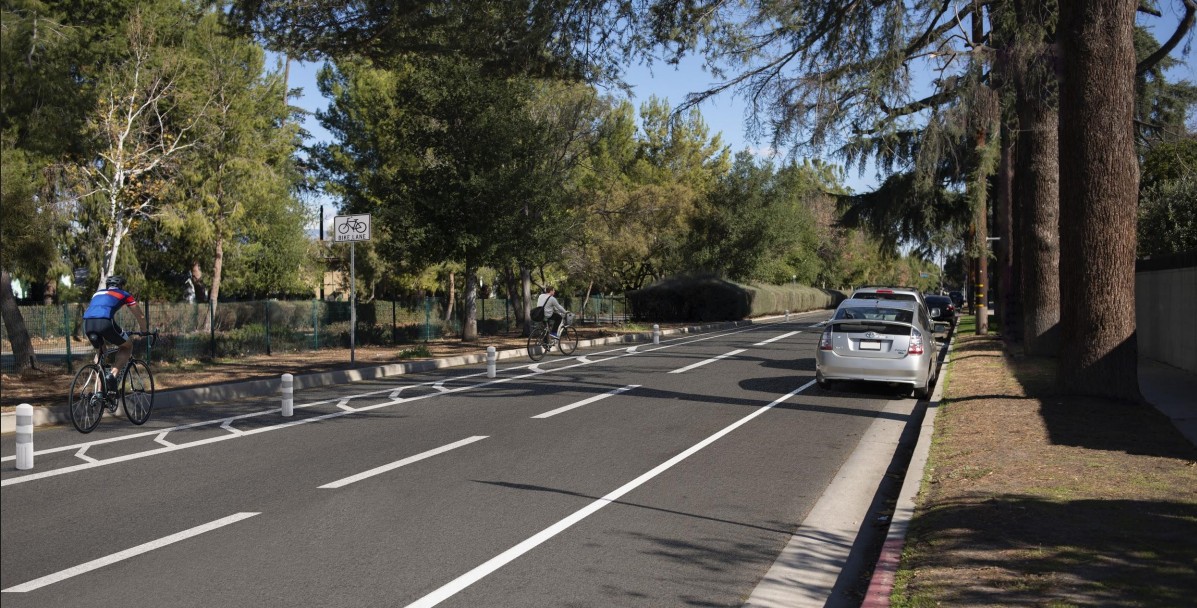This week, we’re joined by staff from the Metropolitan Atlanta Rapid Transit Authority: Deputy General Manager Collie Greenwood and Senior Director of Transit Oriented Development, Real Estate, and Art in Transit Jacob Vallo, who talk one-on-one about the agency’s bus-network redesign and TOD program.
For those of you who get your news through your eyes and not your ears, there’s an edited transcript below the audio player. For an unedited transcript, click here.
Jacob Vallo: I’m so excited to unpack this conversation with you, Collie, with you covering the lines and me covering the dots. But, recognizing that the common denominator is people and that all of this work is inextricably linked. So let’s turn a little bit to more specifics around the transit system. And if we could talk a little bit about the bus-system redesign project, could you describe the steps you took to make sure the bus-system redesign project started off with a deep understanding about Atlanta and its history?
Collie Greenwood: Even before I get to that, when you talk about the people, you’re absolutely right. So I’m going to go with pre COVID statistics, but, but we’re roughly about 400,000 daily riders on MARTA during the weekday. So when you think about the opportunity to affect someone’s life and someone’s quality of life, there are 400,000 opportunities every day for us, a hundred thousand reasons for us to make this work. So the bus network redesign — and I’m going to say about 50 percent of those riders are bus riders — comes at a good time and comes for a good purpose.
When I say a good time, clearly the transit industry and the country and the world are thinking about how to come back from the pandemic of COVID-19. So that's the time for something that is an earnest look at how we serve the public. The timing couldn’t be better, quite frankly. As I said, 400,000 ridership, there’s absolutely a call for this. It’s not just going to affect just a few people. It’s going to affect the way the city runs and operates for years to come. So we thought about that and we thought: How are we going to structure this bus-network redesign in a manner that really speaks to people that have been in Atlanta for a very long time and speaks to people that are thinking about coming to Atlanta and those that are just here for the moment?
We thought about let us first of all collect the inputs, right? Let’s get the opinions, the anecdotes, the data, and the desires of those that are using the system, as well as those that are planning the system and operating the system. Those that are elected officials, the board members, the board of directors, no shortage of input, not only from the City of Atlanta, but the other areas that we represent, right? So that the counties — Dekalb, and Fulton and Clayton — there’s all kinds of input that was available to MARTA. From there, we decided we were going to design the bookends of available options so that we can have a conversation about what it is that our stakeholders, our customers, want most.
Like most transit agencies, we're faced with the reality that we have a finite amount of resources in terms of funding and equipment — yet the possible conversations about what’s important to our ridership are infinite. So we’re going with two major concepts; we’re designing a coverage concept and we’re designing a ridership concept, both with equally impressive reasons for pursuing them. I wanted to address one of the questions that you asked me, about how do you start off a project like that with a deep understanding about Atlanta and its history? Firstly and critically, perhaps ironically, I had to acknowledge that I myself was lacking in that deep understanding of Atlanta and its history.
I arrived in the USA in July of 2019. So there’s not a lot of depth of history with the city and the product — and, quite frankly, not a lot of pre-COVID exposure to the city. But that outsider’s perspective was actually very useful to me in identifying the needs for the insiders and my desire to apply their teachings to this body of work. So that includes the physical, historical, racial, fiscal and political landscape that we’re working in. I was able to tap into energies and information from the city of Atlanta, [about] Dekalb, Clayton, and Fulton surrounding counties, the operations personnel and planning staff, as well as customers, our riders advisory council, the MARTA accessibility committee, the Transformation Alliance, and the Partnership for Southern Equity. Both are instrumental in setting the tone and establishing the challenge for all stakeholders at the onset of this exercise and throughout the challenge of facing a landscape built on a racist framework and committing to an anti-racist result.
So that’s how we started. But the best part of this process is that it’s designed to continue gaining insight, gaining feedback, along the way as we shape the two divergent network concepts and engage with the public and the stakeholders in defining and enhancing their selected concept.







